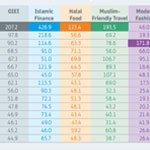Model Pemberdayaan Lembaga Keuangan Mikro Syariah dalam rangka Pengembangan Usaha Mikro Kecil Menengah pada Masyarakat
DOI:
https://doi.org/10.14421/jbs.4081Keywords:
Lembaga Keuangan Mikro Syariah, Model Financing berbasis Ekuitas, Usaha Mikro Kecil MenengahAbstract
Industri keuangan syariah global berkembang sangat pesat termasuk di Indonesia, Otoritas Jasa Keuangan (OJK) menyebutkan bahwa 88% aset keuangan syariah Indonesia ada di pasar modal, 10% ada di perbankan dan sisanya 2% ada pada industri keuangan non-bank (IKNB). Hal ini menunjukan bahwa kontribusi lembaga keuangan mikro syariah (LKMS) masih sangat minim di Indonesia, sedangkan Indonesia memilki potensi sangat besar sebagai negara berkembang dan mayoritas masyarakatnya adalah muslim. Penelitian ini bertujuan untuk melakukan eksplorasi terkait model pengembangan LKMS secara kualitatif. Hasil yang diperoleh bahwa terdapat dua fungsi pokok LKMS, yaitu: funding dan financing, untuk mengembangkan usaha kecil masyarakat yang erat kaitannya financing. Secara umum terdapat dua model financing, yaitu berbasis ekuitas dan berbasis utang. Model financing berbasis ekuitas kurang populer dibanding yang berbasis utang karena komplektifitasnya, sedangkan model ini memiliki risiko lebih rendah dan langsung berdampak pada sektor riil. Sehingga model yang paling ideal untuk pemberdayaan LKMS dalam rangka pengembangan UMKM adalah model financing berbasis ekuitas.
[The global Islamic finance industry is developing very rapidly, including in Indonesia, the Financial Services Authority (OJK) stated that 88% of Indonesia's Islamic financial assets are in the capital market, 10% are in banking and the remaining 2% are in the non-bank financial industry (IKNB). This shows that the contribution of Islamic microfinance institutions (LKMS) is still very minimal in Indonesia, while Indonesia has enormous potential as a developing country and the majority of its people are Muslims. This study aims to explore the development model of LKMS qualitatively. The results obtained show that there are two main functions of LKMS, namely: funding and financing, to develop community small businesses which are closely related to financing. In general, there are two financing models, namely equity-based and debt-based. The equity-based financing model is less popular than the debt-based one because of its complexity, while this model has a lower risk and has a direct impact on the real sector. So that the most ideal model for empowering MFIs in the context of developing MSMEs is an equity-based financing model.]
References
Antinio, M.S. (1999). Bank Syari’ah: Wacana ulama’ dan Cendekiawan, tazkiyah institut, Jakarta.
Chong, B. S., dan Ming-Hua Liu, M. H. (2009). Islamic banking: Interest-free or interest-based?. Pacific-Basin Finance Journal, Volume 17, Issue 1. 125-144.
Dusuki, A. W., & Abdullah, I. N. (2006). The ideal of Islamic banking: chasing a mirage. In INCEIF Islamic Banking and Finance Educational Colloquium, Kuala Lumpur, Malaysia (Vol. 68).
Fianto, B. A., Gan, C., H, B., dan Roudaki, J. (2017). Equity financing and debt-based financing: Evidence from Islamic microfinance institutions in Indonesia. Pacific-Basin Finance Journal. Vo. 52. 163-172
Jamil, S. (2002). Manajemen dalam Perspektif Islam. Yogyakarta: STIS Yogyakarta.
Majid, B. A. dkk, (2007), Pedoman Pendirian, Pembinaan dan Pengawasan Lembaga Keuangan Mikro BMT, Laznas BMT, Jakarta.
Muhammad. (2005). Majemen Dana Bank Syari’ah, Ekonisia, Yogyakarta.
Mesliera, C., Risfandya, T. ;Tarazia, A. (2020). ISLAMIC BANKS EQUITY FINANCING, SHARIAH Supervisory Board, And Banking Environments. Pacific-Basin Finance Journal (62).
Nasir, H., Hasanuddin, M. (2008). Ensiklopedi Ekonomi dan Perbankan Syariah, Kafa Publishing.
Paul, S., & PRESLEY, J. R. (1999). Islamic Finance: Theory and Practice. Macmillan.

Downloads
Published
How to Cite
Issue
Section
License

This work is licensed under a Creative Commons Attribution-NonCommercial-ShareAlike 4.0 International License.
Authors who publish with this journal agree to the following terms:
- Authors retain copyright and grant the journal right of first publication with the work simultaneously licensed under a Creative Commons Attribution-NonCommercial-ShareAlike 4.0 International (CC BY-NC-SA 4.0) that allows others to share the work with an acknowledgement of the work's authorship and initial publication in this journal.
- Authors are able to enter into separate, additional contractual arrangements for the non-exclusive distribution of the journal's published version of the work (e.g., post it to an institutional repository or publish it in a book), with an acknowledgement of its initial publication in this journal.
- Authors are permitted and encouraged to post their work online (e.g., in institutional repositories or on their website) prior to and during the submission process, as it can lead to productive exchanges, as well as earlier and greater citation of published work.





